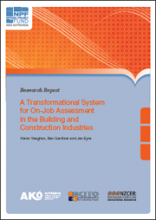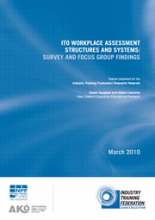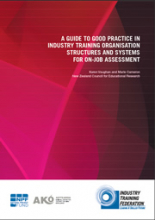NZCER's Learning at work work
You are here
Learning at work
Recent Learning at work research publications
Explores the role of vocational thresholds in capability development for general practice medicine, carpentry, and engineering technician work and how it can apply to learning in any field.
This report is the second annual evaluation report for the Teach First NZ pilot programme.
How do people learn to become general practitioners, carpenters and engineering technicians? This report is based on the Knowing Practice project and explores practice-based learning and capability building across three different fields. It is co-published by NZCER and Ako Aotearoa.
This article examines a critical incident during research investigating a new assessment system for on-job learning in carpentry.
It’s a big deal to become an apprentice. You’ve decided you’d like to get trade qualified and your boss thinks you’re worth the time and effort. That’s why they signed you into a training agreement. While on the surface things might seem a little overwhelming, it’s not out of control. In fact it’s really under your control. So now is a good time for you to take charge of your apprenticeship because let’s face it – it’s your apprenticeship, your qualification and your career!
This report discusses findings from the Transforming Industry-Led Assessment of On-Job Learning project. The project has been a collaboration between the New Zealand Council for Educational Research (NZCER) and the Building and Construction Industry Training Organisation (BCITO), funded by Ako Aotearoa. The project’s aim was to shed more light on systems of on-job assessment generally by focusing on one ITO specifically—the BCITO—and its improvements in organisational capability in order to improve outcomes for learners.
Lots of time and effort goes into OHS training, but which approaches really work? This article summarises the results of research into workplace learning.
This report analyses and discusses findings from a study of training programmes at six different workplaces, across four different industry sectors, around the country. Our research team visited each workplace, observed training sessions or training-related activities, and interviewed a range of people who were participating in the training, or leading and supporting the training programme and trainees.










